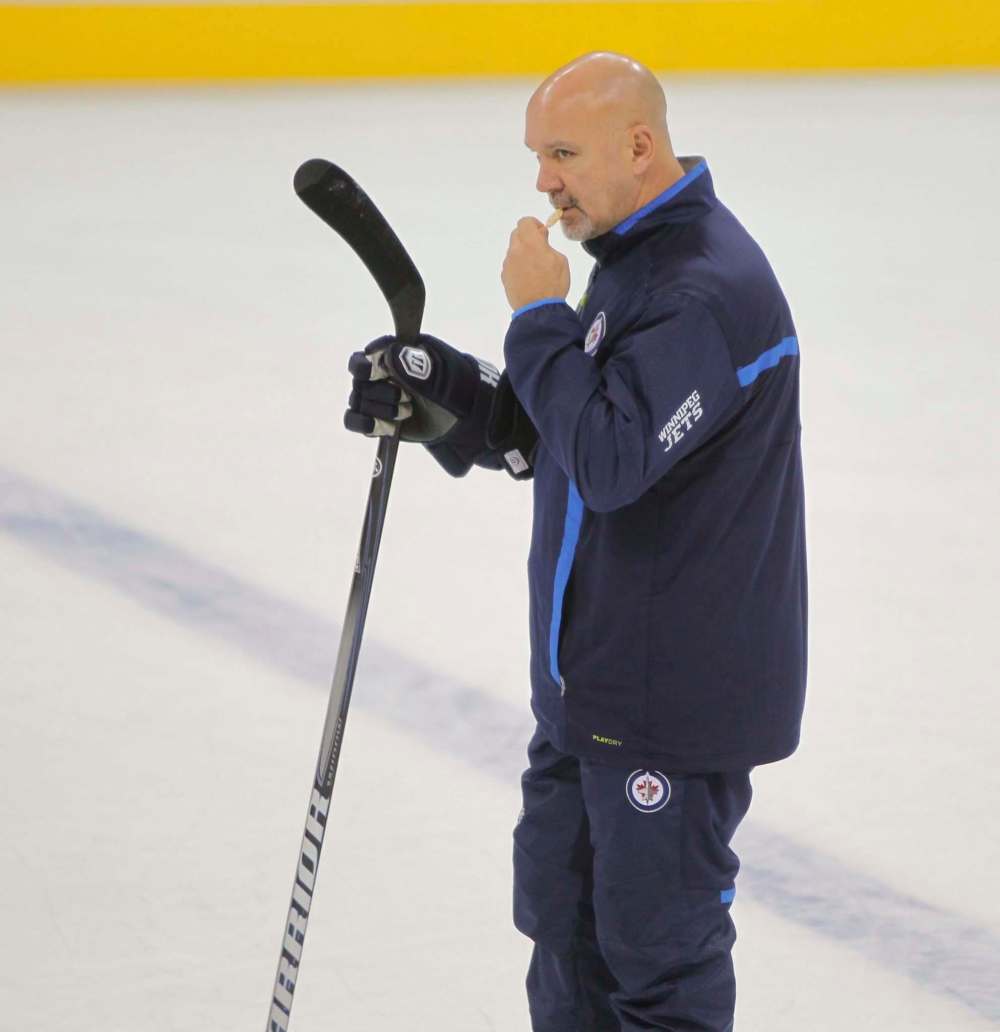Former Oiler Huddy knows value of drills at Jets practices
Advertisement
Read this article for free:
or
Already have an account? Log in here »
To continue reading, please subscribe:
Monthly Digital Subscription
$1 per week for 24 weeks*
- Enjoy unlimited reading on winnipegfreepress.com
- Read the E-Edition, our digital replica newspaper
- Access News Break, our award-winning app
- Play interactive puzzles
*Billed as $4.00 plus GST every four weeks. After 24 weeks, price increases to the regular rate of $19.00 plus GST every four weeks. Offer available to new and qualified returning subscribers only. Cancel any time.
Monthly Digital Subscription
$4.75/week*
- Enjoy unlimited reading on winnipegfreepress.com
- Read the E-Edition, our digital replica newspaper
- Access News Break, our award-winning app
- Play interactive puzzles
*Billed as $19 plus GST every four weeks. Cancel any time.
To continue reading, please subscribe:
Add Winnipeg Free Press access to your Brandon Sun subscription for only
$1 for the first 4 weeks*
*$1 will be added to your next bill. After your 4 weeks access is complete your rate will increase by $0.00 a X percent off the regular rate.
Read unlimited articles for free today:
or
Already have an account? Log in here »
Hey there, time traveller!
This article was published 28/09/2016 (3290 days ago), so information in it may no longer be current.
They’re a staple of training camp. Most hockey practices, in fact.
The mind-numbing, tedious, seemingly endless on-ice drills: breakouts, three-on-twos, two-on-ones, power-play and short-handed situations, and…
Tedious? Not for Winnipeg Jets assistant coach Charlie Huddy, whose eyes light up when he talks about them. You could say drills are the bread and butter of his workday.

Huddy, along with the other members of the club’s coaching staff, invest a good chunk of their prep time creating new drills or modifying old ones for future workouts.
“We’re building practice for the structure of the game,” Huddy said following a training camp scrimmage at the MTS Iceplex Wednesday afternoon. “We went through the summer, had meetings and we realized there were areas we need to get better in. We need to manufacture drills to get better in the areas we need to get better at.”
Drills at training camp, with a large number of new, younger players, have a narrow focus.
“Mostly just five-on-five structure,” Huddy said, adding the 3-0 score in Tuesday’s preseason-opening loss to Calgary “was whatever.”
“There was structure we had put in the last four days of practice… and there were signs of doing the right things. So the guys are getting it.”
It’s a lot about helping new players learn the Jets’ way of doing things and reminding veterans about how they got there.
“We start in components, take basic things and then continue to build — add a player, add another play so now, instead of working on a one-on-two or two-on-two, now it’s a two-on-three to a three-on-three to a four-on-four to a five-on-five,” said assistant coach Jamie Kompon, who is serving as the club’s media point man while head coach Paul Maurice is working behind the Team Europe bench in the World Cup of Hockey final series.
Veterans such as Adam Lowry are already locked in.
The 23-year-old centre is a fourth-year pro in his sixth training camp with the Jets. The son of former NHL player and coach Dave Lowry — the current bench boss of the WHL’s Victoria Royals — he understands the importance of grunt work.
“I think if you look at the drills we’re doing right now, there’s a lot of simple lessons we can implement in our games, whether its’s certain things on three-on-twos or two-on-ones, things like that,” Lowry said. “It’s important that you take the time to really pay attention and you find the things the coaching staff is trying to utilize in practices and you use that in game situations.”
Captain Blake Wheeler is a believer, too.
“We do drills all season,” Wheeler said. “We try to work on things, work on your structure. You do it with a purpose to get everyone on the same page.”
Huddy, a defenceman on the free-wheeling, high-scoring Edmonton Oilers teams of the 1980s, said tactical changes to the game and technological advances made it essential for clubs in the modern era to prepare their players like never before. Video allows teams to review virtually everything, dissecting every play.
“In the regular season we pre-scout the other teams on their play and make adjustments to our play so that will carry over into our practice,” he said. “We would set up different drills to adjust to the different teams we’re playing. And then again, when the games are over, we always watch the games again to see what we need to improve on and we’ll build our practice around the areas we need improvement.”
Huddy concentrates on the work of his defensive corps.
“I’ll spend more time watching the D if it’s breakouts or neutral zone,” he said. “(For) the young defenceman, the hardest part of the game — they might have skill, they may be able to skate — is the play in your own end, the D-zone coverage. With so many skilled players, things happen so fast.”
Reading plays in the NHL is a big jump from the AHL, and an even longer journey from playing junior.
Forwards and defencemen learn from the same drills, improving play-reading and reaction on both sides of the puck, Huddy said.
“It takes time… it’s not an easy process,” he said.
mike.sawatzky@freepress.mb.ca
Twitter @sawa14







